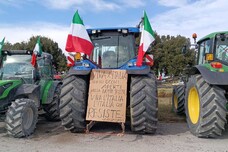Busts of five male heads, dating
from the second or third century AD and recently excavated from
the Roman Villa of Gianola, are going to display at the
archaeological museum in Formia.
The carefully carved hair curls around the sculpted face
and deep-set eyes of one suggests the future emperor Marcus
Aurelius or possibly his son Commodus, analysts say.
Other faces seem equally contemporary to what has been
described as one of the most ambitious Roman houses of the era
to be found overlooking the Gulf of Gaeta.
The busts were discovered approximately one year ago during
excavations in the area of the Villa of Gianola, about 120
kilometres south of Rome.
Experts say the villa may have belonged to a a dissolute
knight named Mamurra, who became rich in the wars in Gaul and
Spain.
That allowed him to build the villa on three levels, with
spa facilities so ornate that it could compete with its
illustrious neighbours, says Alfonsina Russo Tagliente, Lazio
regional superintendent of archaeology.
ALL RIGHTS RESERVED © Copyright ANSA











